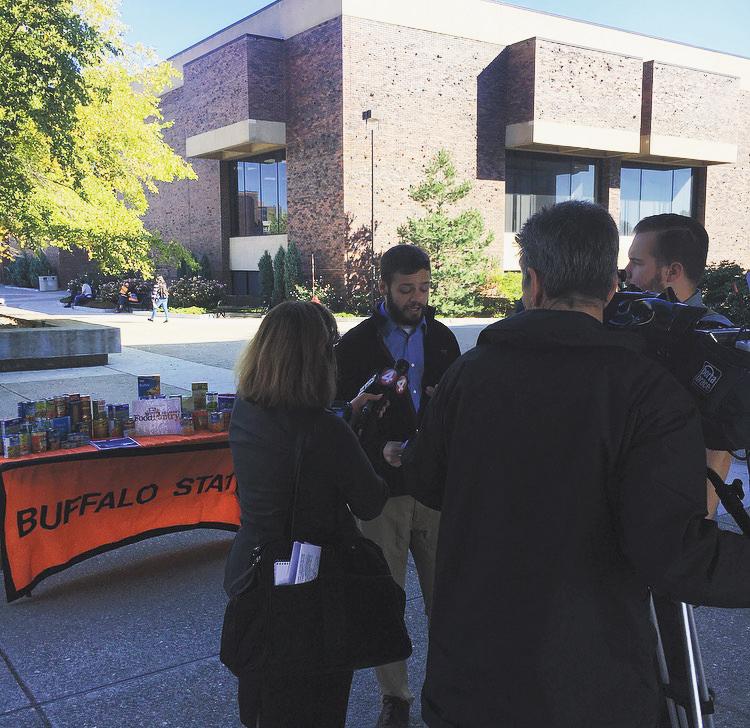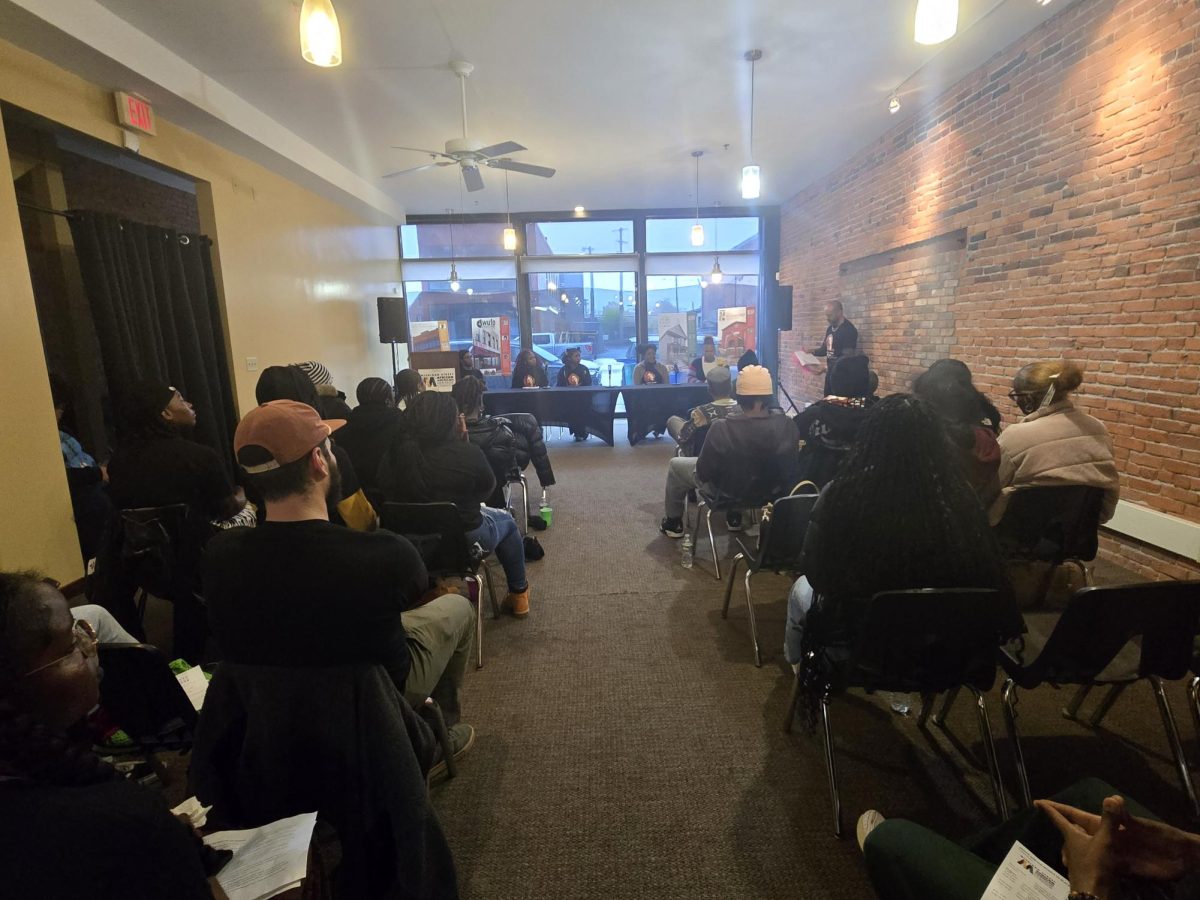NYPIRG raises student hunger awareness
Wes Thomas speaks to media while receiving donations.
October 11, 2016
A survey of nearly 4,000 college students shows that students are struggling to eat regular, healthy meals. Many organizations collaborated with New York Public Interest Research Group (NYPIRG) and conducted this nationwide survey in 2016.
On Oct. 5 under the Cleveland Hall archway, Buffalo State’s chapter of NYPIRG hosted a press conference to speak about hunger issues throughout college campuses.
The three-month study revealed that many students suffered from a “lack of reliable access to sufficient quantities of affordable, nutritious food,” also known as “food insecurity.”
The study sample covered 12 states, reaching 34 colleges. According to NYPIRG, 48 percent of students are food insecure, including 22 percent that can be categorized as hungry, or very food insecure.
Eight of the 34 institutions were community colleges, where the number of hungry students is 25 percent higher.
The staggering number of food insecure students may be linked to the increase in college tuition. NYPIRG shows a 30 percent increase in admissions since 2011 as part of a “rational tuition” policy that SUNY and CUNY schools adopted.
In addition to the tuition hike, since 2010, stricter guidelines for receiving TAP were implemented, and the existing recipients had their funding cut by $75.
Most of the students experiencing food insecurity have paying jobs, and they’re finding it extremely difficult to financially balance everything, given these rising expenses. Studies show that the student body has shifted from the days of being enrolled and living on campus while receiving financial support from parents.
According to nypirgstudents.org, nearly 75 percent of students are employed, with 20 percent of them working full-time. However, only 18 percent of working students are able to cover their college expenses.
NYPIRG says that students feel that the added pressures of working and still, not having enough money to eat has had an effect on academics. The majority say they miss classes and often fail to purchase required textbooks. Some have suggested dropping classes because of an inability to consistently eat.
In extreme cases, this has escalated to a form of homelessness. 15 percent of food insecure students deals with some level of homelessness.
Food insecurity is higher in African American students, affecting 57 percent of them, a 19-percent increase above the national average.
Collegedata.com suggests that out of Buffalo State’s student body of over 9,000 students, 29 percent are African American, significantly higher than the average of African Americans attending college across the nation.
These findings suggest that Buffalo State has a higher percentage of students facing food insecurities than most institutions throughout the nation.
Bringing NYPIRG to speak on these issues demonstrates an effort to raise awareness. Buffalo State has also placed a food pantry on campus. Milligan’s Food Pantry is located in the Campbell Student Union.
Milligan’s is dedicated to educating students on how to eat healthy while budgeting. They also provide information on how to receive government assistance for buying food, or WIC for those who have children. They have assisted many students over the last three years and they encourage anyone who is in need to take advantage. Donations are also welcomed.
Other methods of assistance are coming into play. According to NYPIRG, the state government issued a freeze on tuition after five consecutive years of increase. Also, New York State minimum wage will reach nearly $10 per hour by the end of 2016.
This is part of a plan to eventually increase minimal wage to $15 per hour by 2021 for those working in New York City and surrounding counties. As for the rest of the state, minimum wage is expected to react $12.50 by 2020.
Over time, this significant increase in income may relieve some pressure for current and upcoming college students.
email: bscrecord@gmail.com




